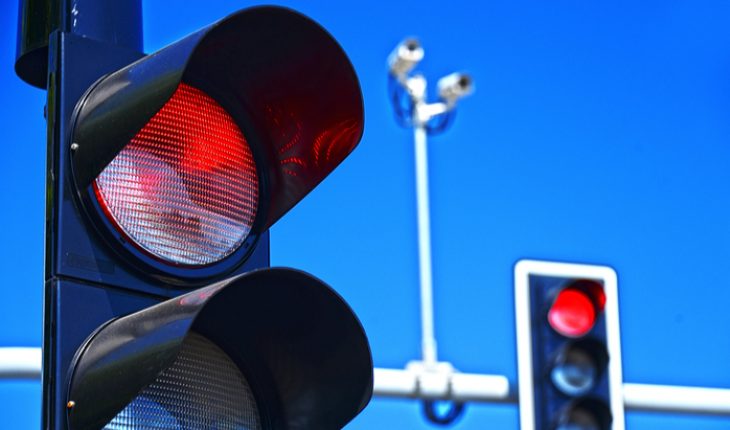Road accident data could help predict crash victims most at risk of brain injury: Imperial researchers have identified how speed, direction, and level of head protection predict brain injury following road traffic collisions (RTC).
Traumatic brain injuries (TBIs) are a leading cause of death and disability worldwide and nearly one in three are caused by RTCs.
A partnership between Imperial College London and TRL (formerly the Transport Research Laboratory) has investigated the relationship between TBI and collision parameters such as speed, direction and force of vehicle impact. By studying more than 2000 collisions they have calculated the likelihood of different types of brain injury on British roads and shown for the first time how collision parameters like changes in speed during collisions relate to different types of brain injuries.
The findings provide the data to automatically identify collisions that are most likely to cause TBI. This could provide the basis for existing crash notification systems to better predict and communicate the risk of severe injury to emergency services. This could help first responders ensure that patients quickly receive the most appropriate kind of treatment.
The findings are published in Brain Communications.
Lead author Claire Baker, PhD researcher at Imperial’s Dyson School of Design Engineering, said: “We looked in detail at which road traffic collisions produce brain injury. We now know which types of collisions lead to the most severe head injuries – data which can be used to inform the emergency response and post-collision care pathways.
“Data needed to make these predictions are routinely collected in many modern cars. This means that algorithms using this data could quickly assess and relay the likely type and severity of TBI for each crash as it occurs, enabling emergency operators to deploy the specific type of treatment needed, faster.”
Fast treatment at specialist major trauma centres is key to improving the outcomes of TBI – 34 million of which are caused by RTCs globally each year.
Senior author Professor David Sharp, from Imperial’s Department of Brain Sciences, said: “Road traffic collisions often produce life-threatening brain injuries, and treating patients quickly gives us the best chance of reducing death and disability. Automatically identifying collisions that are likely to lead to severe TBI will improve the efficiency of our treatment. In addition, our work confirms that the best way to reduce the likelihood of TBI is to reduce the speed of collisions, and that cycle helmets protect from a range of TBI.”
Crash dynamics
The researchers analysed two RTC databases in the UK, comprising over 1.1 million collision casualties between 2013 and 2020. The first, which is the UK’s flagship in-depth RTC database comprising 2065 collisions involving 5374 people, includes data on crash dynamics (speed, direction of impact, and speed change at impact) and head trauma (skull fracture, and three types of TBI: subarachnoid haemorrhage, focal brain injury, and subdural haematoma). The database is known as Great Britain’s Road Accident In-depth Studies (RAIDS) collision database and is managed by TRL on behalf of the UK Department for Transport.
The second database, known as STATS19, comprises 1.1 million collision casualties from police reports, which the researchers used to relate the results from the in-depth RTC data to provide an overall picture of TBI on Great Britain’s roads. This dataset included data on the type of road users involved in a collision alongside overall injury severity and causation.
They found that change in speed at impact were good predictors of brain injury, as were the impact direction and the presence of head protection worn by cyclists.
TBI risk depended on road user type, changes in speed, and the direction of impact. The most severe injuries, including subarachnoid haemorrhage, were linked to side-on impacts and in crashes with the largest changes in speed at the time of collision.
Claire Baker said: “Brain injury was more likely in car users involved in impacts from the side, and where the change in speed was greater, like during a head-on collision. It was also more likely in vulnerable road users, particularly where no head protection was worn.”
Sensing damage
In the UK and European Union, most new cars are fitted with an automatic collision notification system called eCall, which relies on inbuilt crash sensors. eCall automatically alerts the emergency services after a collision. There are other similar systems across the world, for example D-Call Net in Japan or OnStar in the USA. As of summer 2021, 90 per cent of new cars sold in the UK were fitted with eCall.
When inbuilt sensors detect a collision, they record the vehicles’ speeds immediately before, during and after impact. They also record directional movement to ascertain impact direction, which helps piece together the circumstances surrounding an RTC. This in-vehicle data may be used to optimise the decision-making process for potential RTC care pathways by providing rapid and accurate diagnoses of head injury risks.
Co-author Dr Phil Martin, Head of Biomechanics at TRL, said: “Harnessing in-vehicle data could help first responders quickly triage the severity of an RTC and prioritise the trauma care pathway. This will enable emergency services to provide the right resources, to the right place, at the right time, saving lives and reducing the risks of long-term debilitating injuries. We call on policymakers and the automotive industry to open up access to this readily available data so that its value for reducing the irreparable harms caused by RTCs may be fully realised.”
The findings were not based on inbuilt car sensor data from crash notification systems, focusing on data from the RAIDS collision database and STATS19.
Claire Baker added: “Although we didn’t look at sensor data specifically, these risk relationships could inform how inbuilt collision notification systems alert the emergency services to collisions with a high brain injury risk. Such algorithms would flag likelihood and severity to emergency operators who can then direct first responders to major trauma centres.”
Cycle helmets
Pedestrians and cyclists were six times more likely than car occupants to suffer moderate and severe brain injury from RTCs on roads in Great Britain. Wearing a cycle helmet protected against brain injuries and skull fractures even after controlling for any difference in travel or impact speed between helmeted and unhelmeted cyclists.
Professor Sharp said: “The unusual combination of detailed clinical and collision data uniquely positioned us to examine the interaction between speeds in cycle collisions, helmet use and brain injury. Our data confirm that cycle helmets protect against brain injury in a collision. The protective effect of helmet use was not due to cyclists with and without helmets travelling at different speeds. This new evidence from real-world RTC data demonstrates the considerable protective benefits of cycle helmets during an RTC.”
Claire Baker said: “While our findings support the use of helmets, they also highlight that more must be done to protect vulnerable road users like cyclists and pedestrians. This could include vulnerable road user-friendly vehicle designs and segregated infrastructure for vulnerable road users.”
This work is part of the AutoTRIAGE Project, which is funded by TRL (formerly the Transport Research Laboratory) and the Engineering and Physical Sciences Research Council.
- Paper available at https://academic.oup.com/braincomms/advance-article/doi/10.1093/braincomms/fcac033/6527565
- “The relationship between road traffic collision dynamics and traumatic brain injury pathology “by Claire E. Baker, Phil Martin, Mark H. Wilson, Mazdak Ghajari, and David J. Sharp, published 12 February 2022 in Brain Communications.
- About Imperial College London
Imperial College London is one of the world’s leading universities. The College’s 20,000 students and 8,000 staff are working to solve the biggest challenges in science, medicine, engineering and business.
Founded in 1907, Imperial builds on a distinguished past – having pioneered penicillin, holography and fibre optics – to shape the future. Imperial researchers work across disciplines to improve health and wellbeing, understand the natural world, engineer novel solutions and lead the data revolution. This blend of academic excellence and its real-world application feeds into Imperial’s exceptional learning environment, where students participate in research to push the limits of their degrees.
Imperial is University of the Year 2022 in the Times and Sunday Times Good University Guide. It is the world’s fifth most international university, according to Times Higher Education, with academic ties to more than 150 countries. Reuters named the College as the UK’s most innovative university because of its exceptional entrepreneurial culture and ties to industry.
Imperial staff, students and alumni are working round-the-clock to combat COVID-19. Imperial has nearly two thousand key workers, and is at the forefront of coronavirus epidemiology, virology, vaccine development and diagnostics. More than one thousand Imperial staff and students are volunteering to support the NHS.
- New lipid-based pathway discovered as key to memory formation - 25th June 2025
- Crucial link could explain how Alzheimer’s takes hold - 25th June 2025
- Understanding Your Mind Can Improve Daily Life - 25th June 2025






